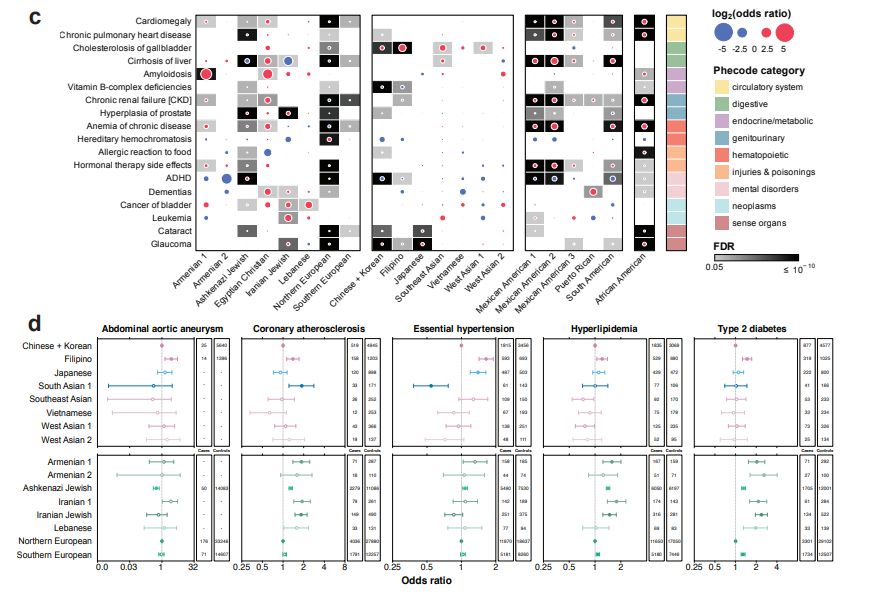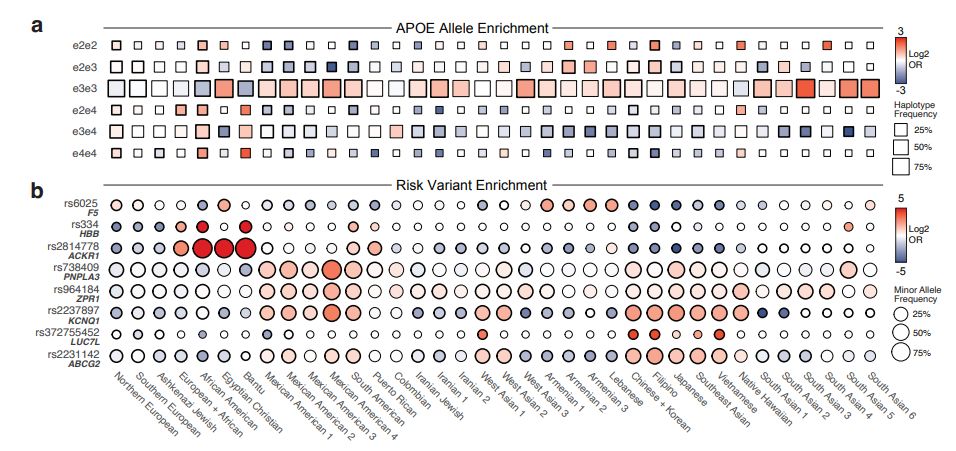Statistical, population, and medical genetics; preimplantation genetic testing. Views my own.
http://scarmilab.org
1. A paper has been submitted to a "high profile" journal. I think no editor in their right mind should take it, but I have no hope.
2. Details on the psychiatric PRS analysis were reported by the investigator.
edition.cnn.com/2025/11/13/s...


1. A paper has been submitted to a "high profile" journal. I think no editor in their right mind should take it, but I have no hope.
2. Details on the psychiatric PRS analysis were reported by the investigator.
edition.cnn.com/2025/11/13/s...

www.nature.com/articles/s43...
The NG data was either established risk factors or learned from a high-dim dataset. Prediction used logistic regression/neural network.

www.nature.com/articles/s43...
The NG data was either established risk factors or learned from a high-dim dataset. Prediction used logistic regression/neural network.

This gave the triploid lineage a growth advantage, and over time, it took over the bone marrow and rescued hematopoiesis.

This gave the triploid lineage a growth advantage, and over time, it took over the bone marrow and rescued hematopoiesis.
The embryo retained this lineage and continued to develop with low frequency mosaic triploidy.

The embryo retained this lineage and continued to develop with low frequency mosaic triploidy.
After two years, we can breathe again.
Let's hope this day follows with peace and prosperity to the whole region.

After two years, we can breathe again.
Let's hope this day follows with peace and prosperity to the whole region.
There were no associations with other traits, including education.
3/3

There were no associations with other traits, including education.
3/3
Due to the randomness of Mendelian inheritance, sibs differ in their ancestry proportions. At the same time, they have a nearly identical environment.
2/3

Due to the randomness of Mendelian inheritance, sibs differ in their ancestry proportions. At the same time, they have a nearly identical environment.
2/3

* Disease prevalence
* PRS accuracy
* Number of embryos
* Live birth rate
* Parental PRS
* Disease status of parents and previously born siblings
* Embryo selection strategy

* Disease prevalence
* PRS accuracy
* Number of embryos
* Live birth rate
* Parental PRS
* Disease status of parents and previously born siblings
* Embryo selection strategy
Users specify the parameters of the embryos, the disease, and the family, and the app computes the risk of the child with or without PES.
You can also generate plots of the risk reductions vs key parameters.


Users specify the parameters of the embryos, the disease, and the family, and the app computes the risk of the child with or without PES.
You can also generate plots of the risk reductions vs key parameters.

Is that because polygenic scores are so important for precision medicine?
Or because polygenic score studies became so easy to conduct?

Is that because polygenic scores are so important for precision medicine?
Or because polygenic score studies became so easy to conduct?

www.science.org/doi/10.1126/...

www.science.org/doi/10.1126/...
onlinelibrary.wiley.com/doi/10.1111/...
genomebiology.biomedcentral.com/articles/10....



onlinelibrary.wiley.com/doi/10.1111/...
genomebiology.biomedcentral.com/articles/10....
94k genotyped, 62k exomes. Paper includes fine-scale IBD-based clustering, disease burden and rare variants per cluster, GWAS on 776 phenotypes, and rare variant testing, discovering PTPRU as linked to GLP-1 response.
www.medrxiv.org/content/10.1...




94k genotyped, 62k exomes. Paper includes fine-scale IBD-based clustering, disease burden and rare variants per cluster, GWAS on 776 phenotypes, and rare variant testing, discovering PTPRU as linked to GLP-1 response.
www.medrxiv.org/content/10.1...
Figures: height and BMI show little or substantial heterogeneity, respectively.
www.sciencedirect.com/science/arti...



Figures: height and BMI show little or substantial heterogeneity, respectively.
www.sciencedirect.com/science/arti...
Cudic et al considers intersections of age, sex, smoking, alcohol, income, and deprivation.
www.medrxiv.org/content/10.1...


Cudic et al considers intersections of age, sex, smoking, alcohol, income, and deprivation.
www.medrxiv.org/content/10.1...
www.medrxiv.org/content/10.1...


www.medrxiv.org/content/10.1...
This is an important privacy gap that should be closed.
www.cell.com/cell/fulltex...

This is an important privacy gap that should be closed.
www.cell.com/cell/fulltex...
I haven't seen any evidence for out-of-sample validation, so this is probably overfitting.

I haven't seen any evidence for out-of-sample validation, so this is probably overfitting.
They also added 1 for one of the sexes (no details).

They also added 1 for one of the sexes (no details).
The PRS was developed based on an existing GWAS and validated in the UK biobank. However, that PRS did not predict disease status in the father's family (only reported in the Discussion! see excerpt).
So the researchers modified the PRS...

The PRS was developed based on an existing GWAS and validated in the UK biobank. However, that PRS did not predict disease status in the father's family (only reported in the Discussion! see excerpt).
So the researchers modified the PRS...

